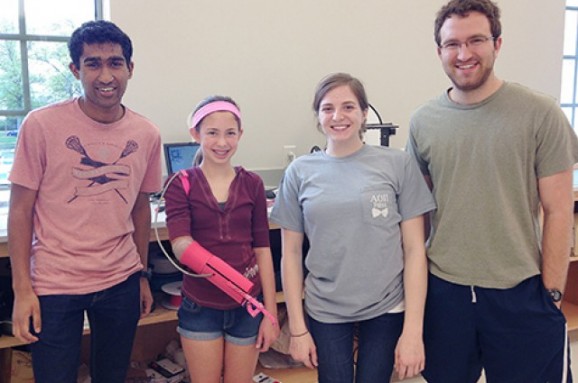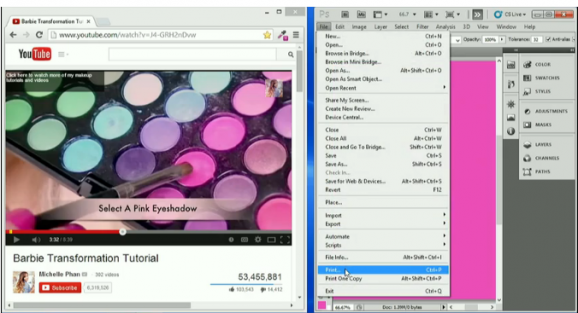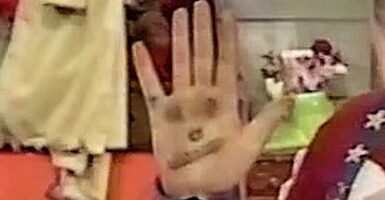Students 3D-Print Affordable Prosthetic Arm And Cosmetics
This article is more than 2 years old
 School nowadays sure is different than it was when I was growing up. I didn’t have a cell phone until I was 22; there was no Facebook, no laptops in class, no course website for uploading and downloading materials, and no 3D printers for us to play with. And like all old people, and we had to walk 20 miles through the snow, uphill in each direction, just to get to school. These days, students are doing all kinds of awesome stuff, like inventing exoskeletons and body-powered flashlights, and figuring out ways to 3D print affordable prostheses and make-up.
School nowadays sure is different than it was when I was growing up. I didn’t have a cell phone until I was 22; there was no Facebook, no laptops in class, no course website for uploading and downloading materials, and no 3D printers for us to play with. And like all old people, and we had to walk 20 miles through the snow, uphill in each direction, just to get to school. These days, students are doing all kinds of awesome stuff, like inventing exoskeletons and body-powered flashlights, and figuring out ways to 3D print affordable prostheses and make-up.
Three biomedical engineering students at Washington University in St. Louis figured out how to 3D print a prosthetic arm for only $200. The recipient, 13-year-old Sydney Kendall, lost her right arm in a boating accident when she was six. She requested a pink arm, so the team printed her one from pink plastic. The students also coordinated with a physical therapy professor and a couple of orthopedic surgeons to be sure their prosthetic met Kendall’s practical and physical needs.
Kendall had tried out a prosthetic before, but found it restrictive. Her new robotic arm, which has a battery-powered motor and an opposed thumb, allows her to throw a ball or maneuver a computer mouse. Prosthetics are generally quite pricey, ranging from thousands to even tens of thousands of dollars. For kids, the cost doesn’t stop there — because they’re growing, they need new prostheses every so often. 3D printing prosthetics is a great and affordable solution to that problem, especially when kids’ color requests can be accommodated.

Color is exactly what drove Grace Choi, a former Harvard business student, to invent a 3D makeup printer. According to Choi, “the make-up industry makes a whole lot of money on a whole lot of bullshit. They do this by charging a huge premium for one thing that tech provides for free — color.” Choi says that the vast majority of make-up is purchased from bulk retail outlets, such as Walmart. But because price points are driven by bulk discounts, only the most popular colors get carried in such stores, and in order to get “niche” colors, one has to drop a wad of cash at a fancy boutique.
Not anymore, thanks to Mink, a printer that provides “the selection of the internet and the convenience of your own freakin’ house.” Choi argues that most people learn how to use make-up and what colors they prefer via Pinterest, Instagram, and other websites, so there’s nothing more natural to them than clicking, copying, and printing out their preferred color. Mink works like an inkjet printer and doesn’t require any new software. Choi uses Photoshop in her demo, but one could use whatever Paint program comes on their computer.

Mink enables people to snap a picture of a friend’s lipstick and then print out lipstick of the same exact shade. All you have to do is see the color online or in a photo (Mink can work with phones, cameras, and computers), copy and paste the hex color code into a paint program, and print. The substrates and inks used in the printing are all FDA compliant, and Mink can print eye shadow, lipstick, powder, foundation — you name it, all ready to apply once they’re printed.
Choi plans to sell Mink for $300. Folks who use a lot of make-up know how quickly and easily they could spend that much buying make-up, so the machine would pay for itself in no time. I feel like there’s a particularly rich market for this when it comes to stage productions — and Halloween parties. And this is definitely the first time I’ve seen an article on 3D printing in Glamour magazine.












